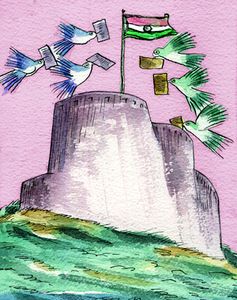S. Jaishankar has been a very cerebral foreign minister, concentrating more on high policy of international power and relationships than his predecessor Sushma Swaraj, who was seen more as a people’s foreign minister. Sushma endeared herself as the Twitter minister, who responded to every message to her on social media. Jaishankar, on the other hand, has preferred that his profile is of a foreign policy leader connecting with the countries round the world to further relationships and to deal with shifting power balances. While his use of social media is very restricted, he has carried forward Sushma’s people-friendly approach by making the ministry equally responsive, especially when Covid-19 has upset the travel and other plans of so many people in India and abroad.
Sushma built up hugely on the people-friendly initiatives of S.M. Krishna, who was external affairs minister under prime minister Manmohan Singh from 2009 to 2012. Krishna had revolutionised the approach of the foreign ministry towards ordinary citizens by starting a network of passport seva kendras, which used technology to issue passports and other travel documents in quick time. Even though there was another minister exclusively for overseas Indian affairs, Krishna made the Indian consulates and embassies round the world more responsive to citizens’ needs. His team would respond round the clock to emails and SMSes (Twitter and WhatsApp became popular after Krishna’s tenure) of distressed people from different parts of the world.
The UPA’s objective of launching the Overseas Indian Affairs ministry—manned by IAS officers—was to look into the multiple woes of the Indians living abroad. However, Prime Minister Narendra Modi, in accordance with his minimum government policy, made Sushma in charge for both the MEA and OIA. Subsequently, in 2016, the OIA ministry was merged into the MEA, to be run by diplomats.
Sushma’s people-first approach also changed the attitudes of the foreign service, which had always held that its only brief was to deal with foreign governments and multilateral issues. She was the ultimate agony aunt for the Indian diaspora around the world. She even received requests to save troubled marriages or help those facing prosecution. With tact and humour, she declined such unviable demands on her powers.
Jaishankar merged the people-focused divisions—passport and visa services as well as overseas Indian affairs—under one senior secretary of the ministry, and chose Sanjay Bhattacharyya, a people-friendly diplomat, to spearhead its functioning. Bhattacharyya had the heft to deal with not only Indian missions but also foreign governments on diaspora issues. The personal approach under Sushma was institutionalised by Jaishankar and Bhattacharyya, as the new system worked round the clock.
Then Covid-19 happened, impacting millions of non-resident Indians and PIOs across the globe, with air, land and sea links snapped. The home ministry, in consultation with the foreign office, cancelled visas of not only foreigners but also of PIOs with foreign passports. The limited resumption of travel through the Vande Bharat Mission has been the MEA’s joint effort with the civil aviation ministry, which is headed by a former ambassador, Hardeep Singh Puri. More than five lakh Indians stranded around the world were brought back to two dozen cities through special flights, which involved delicate negotiations with 100 countries. Then came the air corridor bubbles with countries to which Indians travel maximum for work, by allowing reciprocal flights from airlines of those countries. And, all this managed without much tweeting!
sachi@theweek.in


